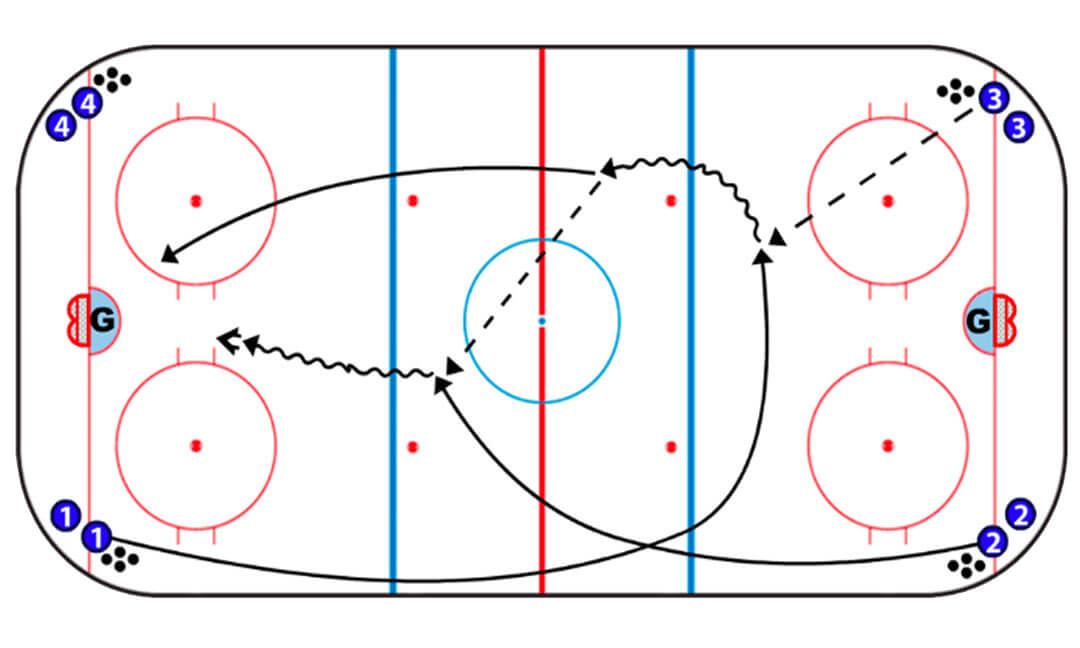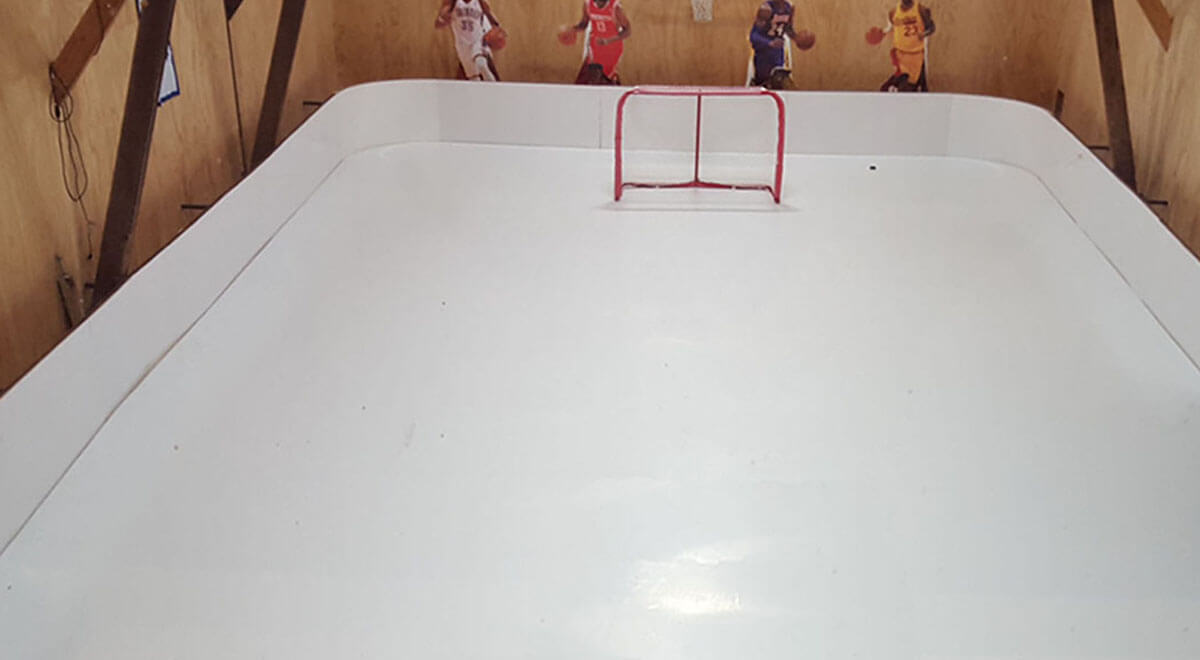Ice Rink Kits: Should You Go Natural Or Synthetic?
Are you thinking about a backyard ice rink?
Nothing beats time on the ice if you are an avid ice skater, hockey player, or figure skater.
The more reps you put in, the stronger, faster, and more confident you become.
But ice skating has a major limitation; access to ice.
So you need to book time, travel to rinks, or work within the confines of coaching.
So now, you might be thinking about your own ice rink, specifically, ice rink kits.
Some people have experience building ice rinks from scratch.
They know the exact materials and measurements and can work with their hands.
Others need help, a plug-and-play system so they can spend less time building and more time skating.
There are two options to consider: natural and synthetic ice rinks.
We’ll break down both and help you make the best choice possible.

What is a rink kit?
To build a model train with train tracks, you can painstakingly source each piece until you have your set.
Or you can get a model kit with all the tools and parts you need to create your model train.
Ice rink kits have all the components you need to build a fully functional skating rink.
These kits come in different sizes and have materials like wood or plastic.
Once you have the parts and a flat backyard surface, you can install your kit.

Rink kits for natural rinks
Most backyard ice rinks depend on lots of water and cold weather.
To build one, you’ll need to measure your yard, then buy enough lumber to make up the rink walls.
Brackets help keep the walls in place.
From there, you’ll need a tarp or another large, strong piece of plastic to go inside the rink (and partially over the rink walls).
Water – and lots of it – fills the rink a couple of inches high, and once it’s cold enough, you have a rink that is ready to go.
The rink kit has all the components you will need to fill with water and create a natural rink.
Some kits come with enough material to cover 20’ x 40’ or more.
You might even be able to get an NHL-sized rink kit!
The best kits should have rink walls (PVC, wood, or polypropylene) and a tough liner to cover the rink and walls.
Pros and cons
Here are some reasons why you should choose a rink kit:
- Kits save you time. No more searching for lumber, plastic boards, and liners at your local Home Depot.
- Kits save you money. Rising real estate costs mean rising material costs. The price of lumber can be much more than what you’re willing to pay.
- You get the exact dimensions you need for your rink. No more guesswork or errors that can cost you more time and money.
- Rink kits are durable, and you can reuse them over several winters.
- Some allow for easy storage. When the temperature warms, you simply let the water run off, then pack up the components for the next winter.
Despite these benefits, natural rink kits do have some limitations:
- You still need manpower to install the brackets for each rink wall. In fact, the entire setup can be time-consuming. It is recommended you stage the rink in advance to avoid any issues.
- Rinks need lots of water, often multiple layers of freezing, to get the best results. So if you’d like a green approach or to save money on water, you’ll be slightly disappointed.
- Rinks are governed by temperature, so you’ll only have the cold winter months for skating. The earlier you start the better. Rink maintenance is also necessary due to rain, snow, and dirt. This can be a daily occurrence if the rink gets heavy use.
- Beware of rink kit quality. Cheaper rinks can have liners that aren’t durable or walls that are difficult to install.
- If you want to scale your rink, you may need to repurchase a new kit as some manufacturers would not sell the additional pieces separately.
Overall, kits are a great option for beginner rink builders.
Choose your size, install, fill with water, and get skating!

Rink kits with synthetic ice
Ice rinks filled with water aren’t your only option.
Synthetic ice rink kits are growing in popularity, especially since the recent pandemic.
Synthetic ice rinks were once for commercial rinks, hotels, and rentals.
Now, you can get a synthetic ice rink kit that’s perfect for your backyard.
Synthetic ice is a special polyethylene material that allows skaters to use their metal skates.
It’s been around for decades, but advancements in research and technology allow them to be cut for home use.
They also come infused with a slip agent to improve the overall skating experience.
Ice rink kits come with a set number of tiles that cover a specific square footage.
For instance, our Home Ice Tile Kit is 4 individual panels covering 32 square feet.
For commercial use or heavy use at home, there are also panels that are bigger, thicker, and more durable.
Once you measure your space, you can get the correct number of kits needed to fill your rink.
Pros and cons
Why should you go synthetic?
Here are some advantages to a synthetic ice rink kit:
- Synthetic ice is easy to install. All you need is a flat, level surface in your backyard. The tiles lay down and have interlocking grooves that allow you to connect them like a puzzle. Use a soft mallet to ensure they are snug.
- You can only install natural rinks containing water outdoors. Synthetic kits can go indoors, too, like garages, basements, spare rooms, driveways, and even your living room. Wherever there is a flat surface, you can skate.
- These panels are durable, allowing them to last for years. You can even flip them over for extra mileage.
- Synthetic ice rinks don’t depend on the weather, so you can install them at your convenience and use them well past the cold winter months.
- These kits are easy to maintain in any weather.
- Kits are scalable. If you need a larger rink, you can purchase and add extra tiles or panels to your existing rink.
And what about the disadvantages?
- Synthetic ice rinks have added friction that natural ice rinks do not. The best synthetic ice has a 10% coefficient of friction, making skating more challenging, and the seasoned skater can tell the difference. However, more friction equals more power and control.
- Synthetic ice rink kits require a more considerable upfront investment than natural rinks.
- Most synthetic ice kits do not come with rink walls because they aren’t needed. However, for a more aesthetic look and safety reasons, you will need to purchase rink walls or dasher boards separately.
Synthetic ice rink kits are easy to source, install, and scale.
More importantly, they will last for years.

Which should you choose?
Choosing the best ice rink kit comes down to a few factors:
- First, what space is available?
- Is it just a backyard hockey rink?
- Do you want an indoor rink too?
- What's your budget?
- Who will use the rink, and for how long?
You can choose the best rink when you answer all these questions.
Natural ice rinks are great family projects, as you can skate on large ice rinks during the wintertime.
However, a synthetic ice rink kit is a long-term option that’s great for multiple areas and with the proper care, your rink lasts for years.
If you want guidance on choosing a synthetic ice kit, feel free to contact us.
We’ve helped hundreds of customers with rinks of all sizes, so we can help you choose the right kit.

























